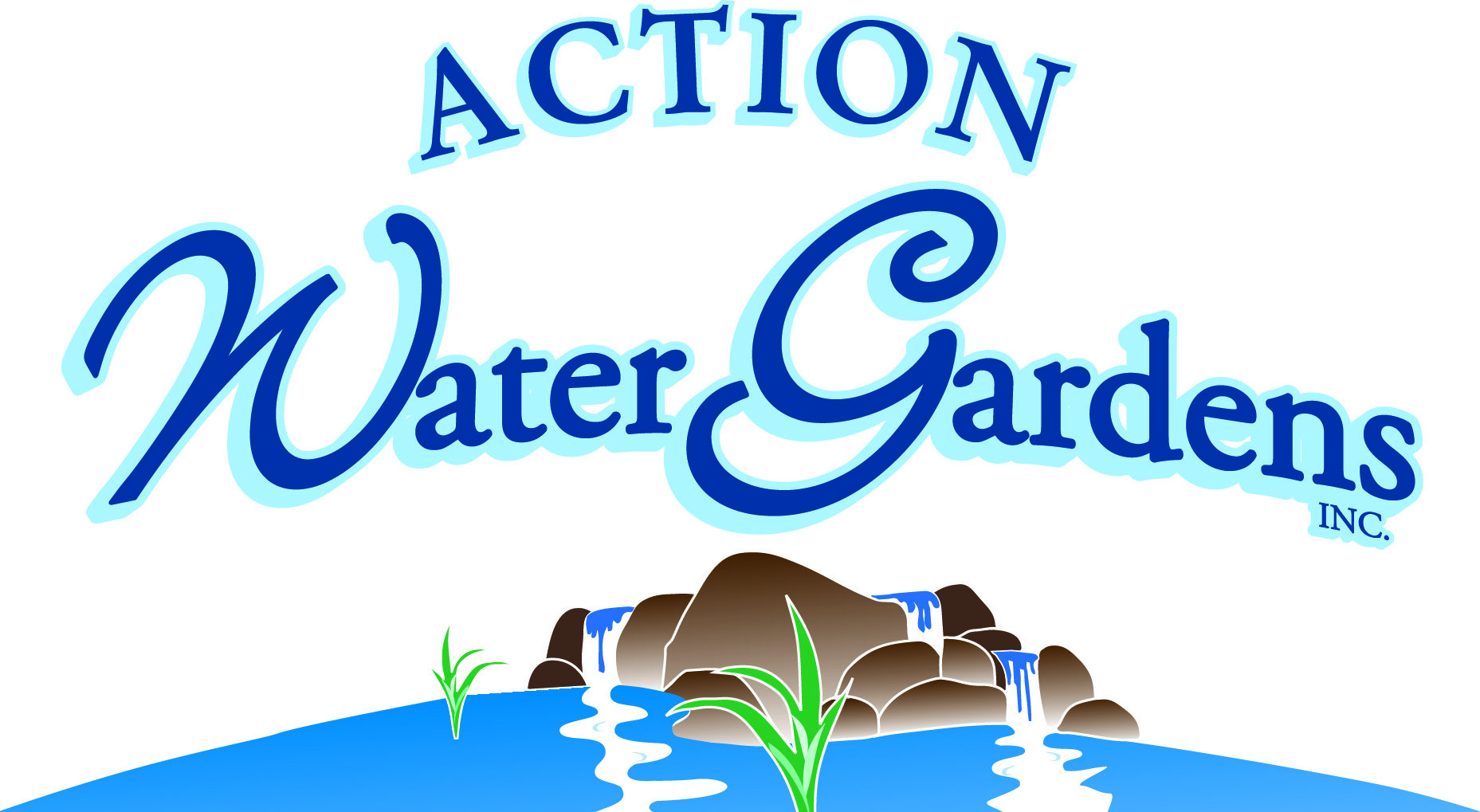Does Your Pond Need a Springtime Overhaul?
If your pond is full of debris and its been a while since you have done a full clean out, then it might be time to give your pond a springtime overhaul!
It is recommended to do a full clean-out once every 2-3 years. How often you will actually have to do it will depend on a few different things: how well the pond is balanced and maintained throughout the seasons, and the ponds location (the amount of sun it receives and the surrounding tree coverage are important to consider because both of these factors have an impact on water quality.) Not sure if your pond needs a cleaning ? Then the crew at Action Water Gardens, Inc. can come check out your water feature, and will let you know exactly what you'll need to do!
Doing a full clean-out also gives you an opportunity to make changes or to add something to your existing waterfeature. Starting with a clean surface and draining the water down will allow you to work on projects such as adding lights or adding and adjusting rock work.
Here is a checklist of tasks that should be done when performing a full pond clean-out:
If you have left your waterfall running during the winter months, then you will want to unplug the pump and disconnect the check valve from the return line. This will allow the water to drain out of the lines. If you did not leave your waterfall running then skip this step.
Remove any winterization devices such as heaters, aerators, and circulation pumps
Drain the pond basin using a clean-out pump. If the pond has fish then use some of the pond water to fill up a stock tank that will be used to house the fish during the clean-out. You will leave about 6" of pond water in the basin. Once the water is down to this level you will carefully remove the fish and put them in the holding tanks. Use a pond aerator to produce oxygen for the fish while they are in the holding tanks. You will also want to cover the holding tanks with a cover such as plywood or mesh bags to prevent the fish from jumping out.
Remove the filtration media from your filter unit and rinse them off. The discharge water from the clean-out pump can be used to save water.
Walk up and down the pond and stream area and remove any solid debris by hand.
Once all of the debris has been removed, then you will use a pressure washer to clean out smaller particulate debris and algae from the surfaces of rocks and stream bed. You will want to start at the top of the stream/waterfall and work your way down. Use the clean-out pump to continue to drain out the dirty water.
Clean out the skimmer and biofalls units by draining them and hosing them down
After you are done with cleaning the surfaces of the pond, then you will want restructure any rock work that has fallen or moved. Cover up any flat areas of liner with gravel.
Return the filtration media to the biofalls
Reconnect the waterfall pump in the skimmer. You will also want to put the skimmer mat, mat rack,debris basket, and skimmer cover back in place at this time
Before refilling the pond you will want to replace any burnt out light bulbs at this time. This is also a good opportunity to add additions or make any changes to the pond because you are starting with a clean surface. You can also replace your iongen probe at this time if you have one of these units.
Fertilize the plants around the pond while the water level is down and you have access to them
Now you can remove the clean-out pump and start refilling the pond. If you have fish then you will want to be sure to use pond detox to remove the chlorine and any toxins from the water. Adding dechlorinator takes a lot of stress of of the fish even if you have well water.
IF the water you have filled the stock tank with is clean enough you will want to add this water back to the pond. This will make it less of a shock to this fish. If the water is too dirty, then you will use the bag floating method to acclimate and reintroduce fish ( this is only necessary when starting with completely new water). You will want to put the fish in bags with water from the stock tank, and float them on the top of the pond for about 20-30 minutes. After that time has passed, gradually add small amounts of the new water from the pond into the bags. This acclimation process is used to prevent shocking the fish. After about a half hour of gradually adding the new water to the bags you can now net out the fish from the bags and return them to the pond.
Once the pond has filled up to a foot in depth it is safe to start reintroducing the fish to the pond.
Continue to fill up the pond. Now you can plug in your pump and run your water feature. You will want to keep an eye on it when it first starts running to make sure all of your equipment is running properly and that there are no leaks.
For more information on doing a full pond clean-out and starting your pond up in the Spring you can check out Aquascapes youtube videos here!
